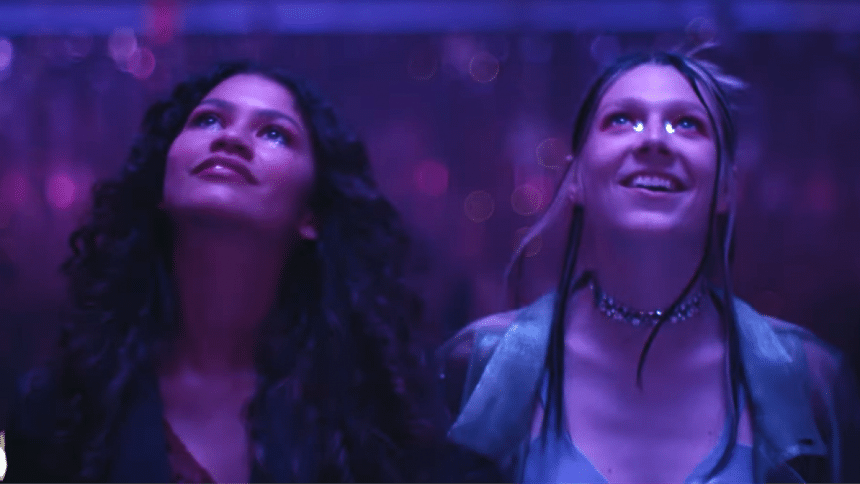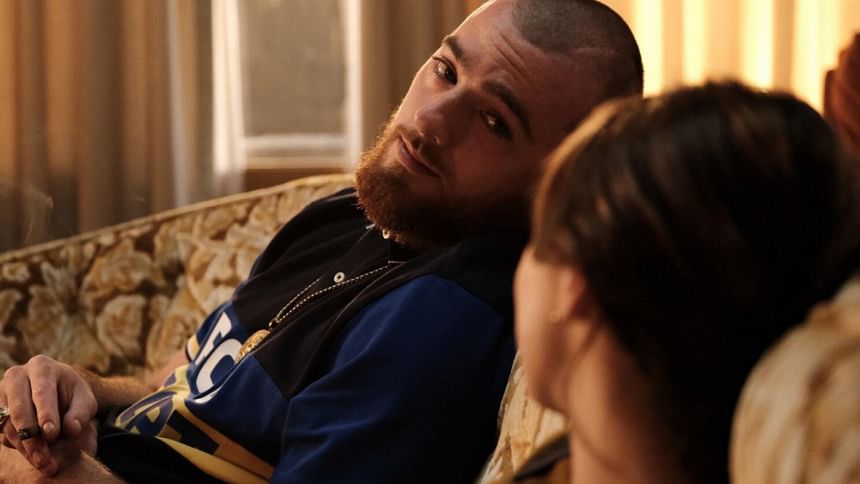A trite trope: How drug-induced montages are losing edge on screen

In all honesty, the filming of the hazed-up and sluggish diplopia, magnified mercilessly by the strong presence of hallucinatory colours resembling questionable club joints and sounds that first seep in vaguely until the individual under the influence, begins hearing properly — has become trite. The fact that an aware audience is easily able to predict the cueing in of an unnecessary drug-addled montage in a project that does not even necessitate such an addition has also become dulling — so much so that I instantly and almost mindlessly give way to a bout of onomatopoeia of disdain.
These insertions seem redundant and repetitive, to say the least, making the overall picture of a project rather pathetic and desperate. The desperation comes off as a need to seem "edgy", which in hindsight does not always stick to the landing. Moreover, the often overlooked method of not providing certain characters with personalities, instead relying on them to consistently remain wasted on screens, does nothing for the "work of art". The real-life repercussions of an individual suffering unduly do not or can't always be translated effectively on screen. If God forbid, someone chooses to pursue the consumption of any given form of drug after being swayed through the representation of it in media to pan out to become incorrigible, then who will take the brunt?

In keeping with my observance, "Baby Reindeer" last struck my agitated nerve when I was met with its turbulent flashes of Donny (Richard Gadd) suffering under psychedelic lights, after consuming GHB (commonly known as a date-rape drug) — on account of choosing to be sedated so that he can resentfully allow his abuser to abuse him for professional promises. The show directed by Weronika Tofilska and Josephine Bornebusch does a terrific job of demonstrating the miserly circumstances the primary character has had to endure. Still, I can't help but feel as though certain scenes or montages were exclusively incorporated to give it a jumpy look. These addendums could have been added to resound Donny's pain through the screen but they took a bit away from Gadd's apparent real-life events seeming believable.

"Euphoria" in its wickedly unscrupulous way of navigating the ostensible teen life of Americans today, has reportedly been argued to be true. According to Time Magazine, among the drugs Rue Bennett (Zendaya) used in the show, overdosing on opioids, in particular, resulted in almost 6,000 individuals aged 15 to 24 dying. This data that further confirmed that 84% of drug-related deaths were fatalities of opioids over other drugs, was obtained from the National Center for Health Statistics. The alarming use of drugs may be true but the questionable production and eventual display of the exacerbated use of drugs on the show can never actually help the data or facts to get better. In search of trying to feel even merely just alright, Rue uses drugs. Her incessant need to quench her thirst and void renders her character to become one without a personality worth gripping, for the longest time. Even the drug dealer Fezco (played by the late Angus Cloud) shines the brightest by the end of season 2 when he is himself with Lexi Howard (Maude Apatow) without having to even want to use drugs.

In a mark of tragic irony, the actor Angus Cloud, who could have otherwise built himself a promising future in the industry, died at the age of 25 last year on July 31. The cause of his demise was the terminal blend of methamphetamine, fentanyl, cocaine, and benzodiazepines. As per NBC News, the actor used to rely on opioids to tackle the pain he still experienced after plunging into a construction site at the age of 15. His mother had also informed that he suffered another injury during the pandemic while being chased by the police after he was caught, red-handed, curating graffiti in Los Angeles. The young actor was also mourning the death of his father when he succumbed to the lethal dose of drugs. Angus' scenario is a stark example of utilising drugs for medical help but in clear disarray of the somewhat normalisation of such substances — an individual lost his life when he assumed he would feel the solace he needed to bear the pain.

The concept of drug abuse or even consumption was introduced freshly in the fourth season of the hit Netflix show "You". In retrospect, it is a wonder why the psychological thriller took so long to introduce death via substance abuse into the mix. In his position of being able to start a new life afresh in London, the literary aficionado-turned-murderer, Joe Goldberg (Penn Badgley) ends up entangled with a group of rich elites who go for recreational drugs for the sake of it. In keeping with the mystery of it all, numerous scenes are blurred out and finished off to keep the facets of intrigue stirring. These cut-offs are meant to be the blackout results of intoxication as well. However, the multiple characters' proclivity to constantly party gives way to the makers employing kaleidoscopic lights and dazed montages to their heart's content.

It won't be much of a stretch to claim that ever since "Breaking Bad" broke an unspoken conduit for the concentration of projects comprising drug-induced bedlam to flow, albeit realistic or otherwise, films and especially shows have been making a point to consciously capitalize off of it. "Orange Is the New Black", for instance, is an impeccable example of literal drug trades taking place amid the amalgamation of characters belonging to varied backgrounds. Heroin and parallelly more powerful drugs like opiates are utilised as the central objects being sold by prisoners. While "You" and even "Gossip Girl" demonstrate the usage of recreational drugs at the behest of the elites in London and New York, "Shameless" takes up the responsibility of the working-class American family hopelessly thrown into the onrush of dramatic happenings being catapulted their way. These shows, nonetheless, do a mentionable task of highlighting how the families of the characters using drugs quell or navigate the warranted mishaps associated with addicts.

Ultimately, the format of films has the upper hand in the portrayal of drugs and addicts. The given length of a film enables makers the space to incorporate emotions at full magnitude without having to draw out plot points and cheapen the real-time threats of drug usage. Films like "Leaving Las Vegas", "Drugstore Cowboy", "Sid and Nancy" and "Requiem for a Dream", among others have the competence to demonstrate an alcoholic willing himself to drink to death while incorporating the demeanour of losing one's soul; an addict turning his life around only to still be haunted by the demons of addiction; the blatant repercussions of the life of a heroin addict who is also the son of a heroin addict; and the alarming results of disillusioned addicts continuously combatting the luring of drugs.
These aforementioned films hence do the job of what addiction-associated projects ought to be catering to. Substance-related undertakings could simply be presented in an unvarnished manner — in the vein that "Monster: The Jeffrey Dahmer Story" (2022) and "Monsters" (2024) are etched visually, keeping the gore and raw bleakness of the tales of notorious serial killers, pulsating. Harking back to "Breaking Bad", the show still feels like an unequalled testimony to the representation of drugs, addiction, substance abuse, dependence, withdrawal symptoms, rehabilitation, overdose, and all that are correlated to being an enabler or an enabling entity.

 For all latest news, follow The Daily Star's Google News channel.
For all latest news, follow The Daily Star's Google News channel. 









Comments